World Cup shipping containers could be reused in Gaza, Heriot-Watt student proposes
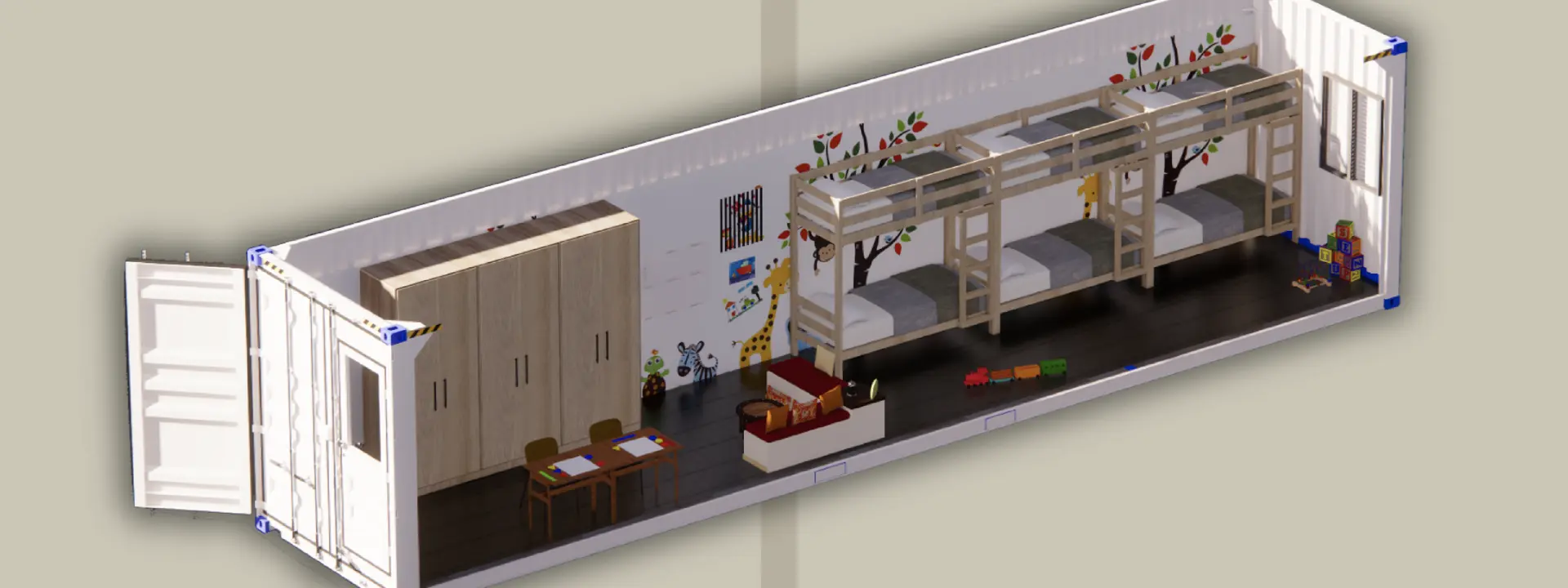
Shipping containers that once housed the World Cup’s first temporary stadium could be repurposed as a shelter for homeless children in Gaza, an interior design student at Heriot-Watt University has proposed.
Egyptian student Habiba Soliman, 21, who graduates today (14 June) with a Bachelor of Arts (Honours) in Interior Design, created plans for the shelter as part of her final year project at the University’s School of Textiles and Design in Galashiels in the Scottish Borders.
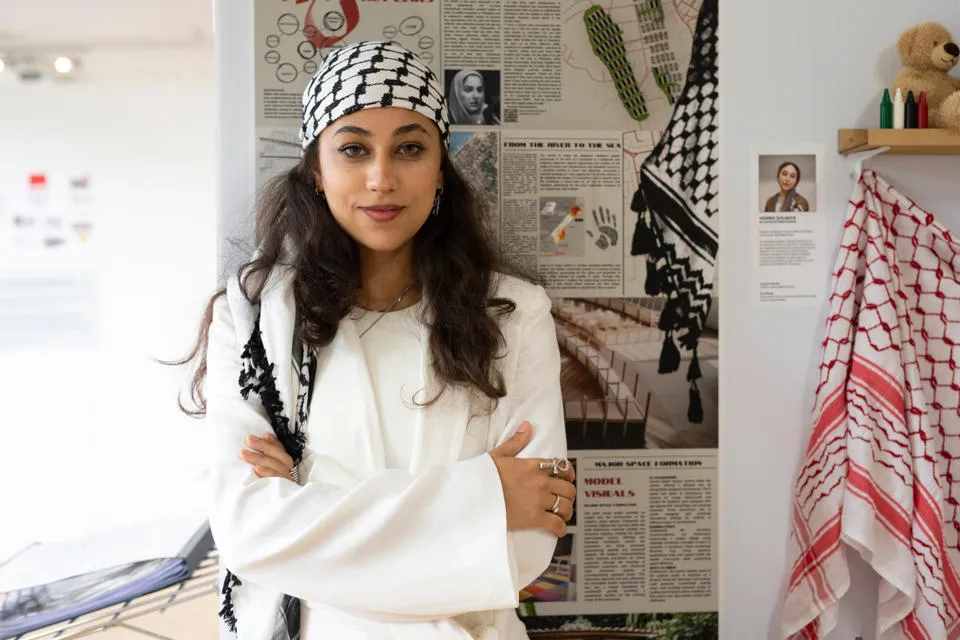
The project would reuse shipping containers from Stadium 974 – a venue made from shipping containers as part of the Qatar 2022 World Cup – and would include residential, food hall, learning and medical centre areas.
“I was seeing coverage of what’s happening in Gaza every day and wanted to help the people of Palestine in any way I could,” Habiba said. “So for my project, I proposed designing and constructing an immediate displaced kids’ shelter to provide a safe, comfortable and sustainable environment for displaced children and orphans in Gaza.”
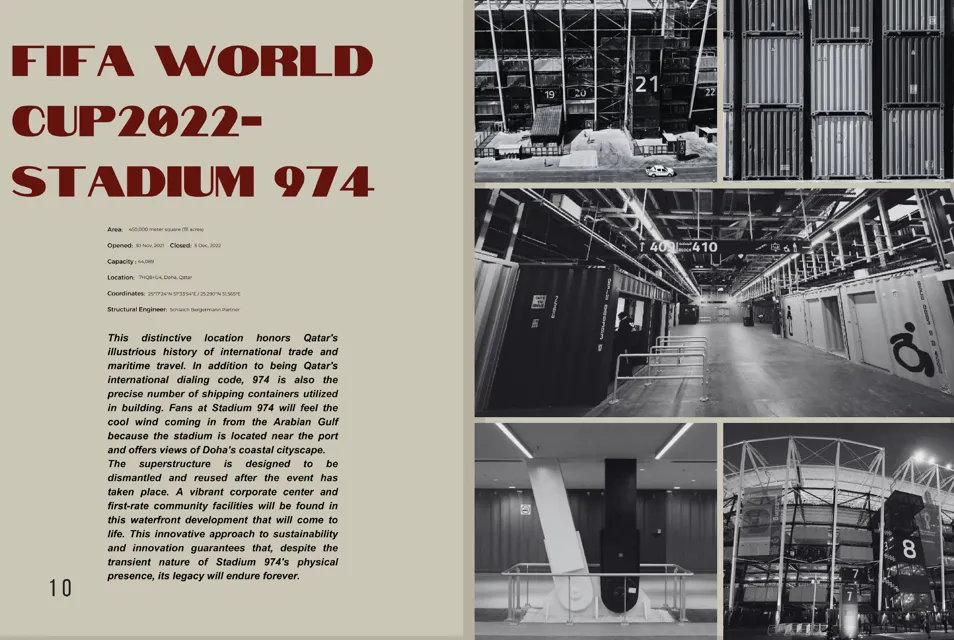
Stadium 974 was named after Qatar's international dialling code and the number of shipping containers used in its construction. It had a 44,089 capacity and hosted seven matches during the 2022 FIFA World Cup. The venue was designed to be fully dismantled and reused and to be more sustainable than structures built with traditional construction materials.
My project is to help children affected by war and could be implemented anywhere in the world.
Habiba’s proposed shelter site is modelled in the shape of a handprint, with shipping containers used to create residential blocks along the fingers of the hand and more shipping containers used to create the food hall, medical and learning centres in the palm of the hand.
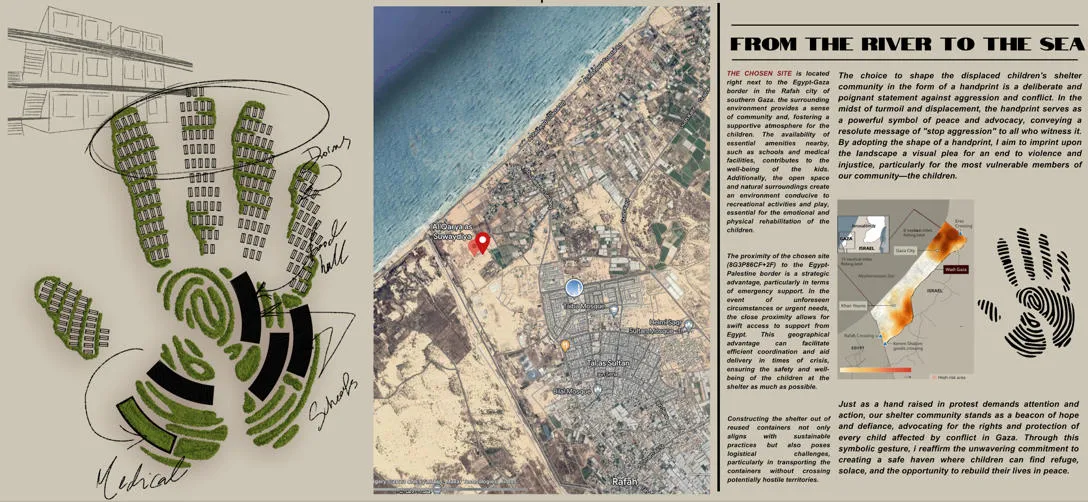
As part of her project, called Design for Disaster, Habiba has used fibreboard to create miniature scale models of shipping containers that are 14cm long. She has also put together a detailed proposal, including proposed designs and a feasibility study that explores potential costs and practical construction considerations.
“To transform the shipping containers into liveable spaces, I had to think about key aspects like insulation, ventilation, flooring, utilities, rust prevention, sealing, interior finishes and security features,” Habiba explains. “I also wanted to create shared spaces that weren’t just practical, but could also help the children feel dignity, belonging and joy. So for example, my proposed food hall also has entertainment areas like a stage, where performances can be put on for the children. The learning centre has classrooms and a library and the medical centre has a nice outdoor area as well as a surgery and other areas.”
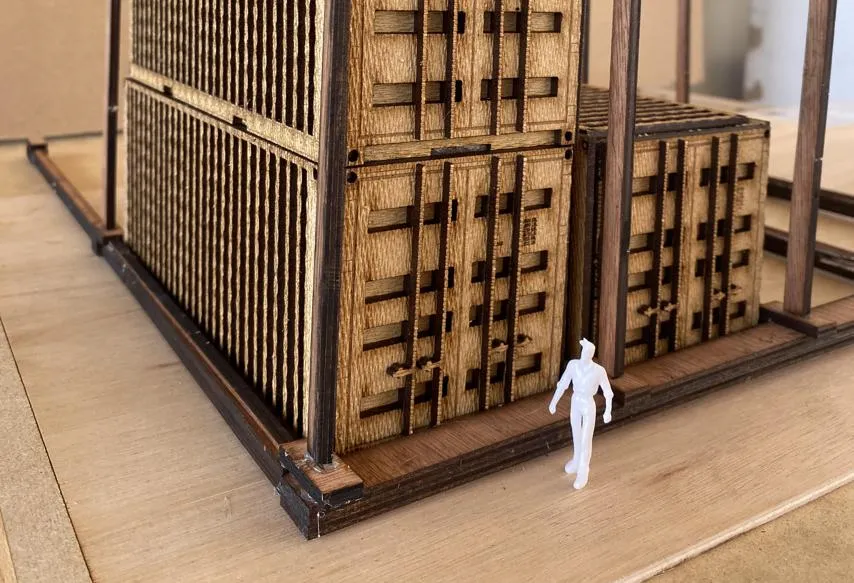
Habiba’s project is currently just an idea, but after graduating, she hopes to explore whether further development of her plans might be feasible.
“My project is to help children affected by war and could be implemented anywhere in the world,” she says. “I would like as many people as possible to know about this project.”
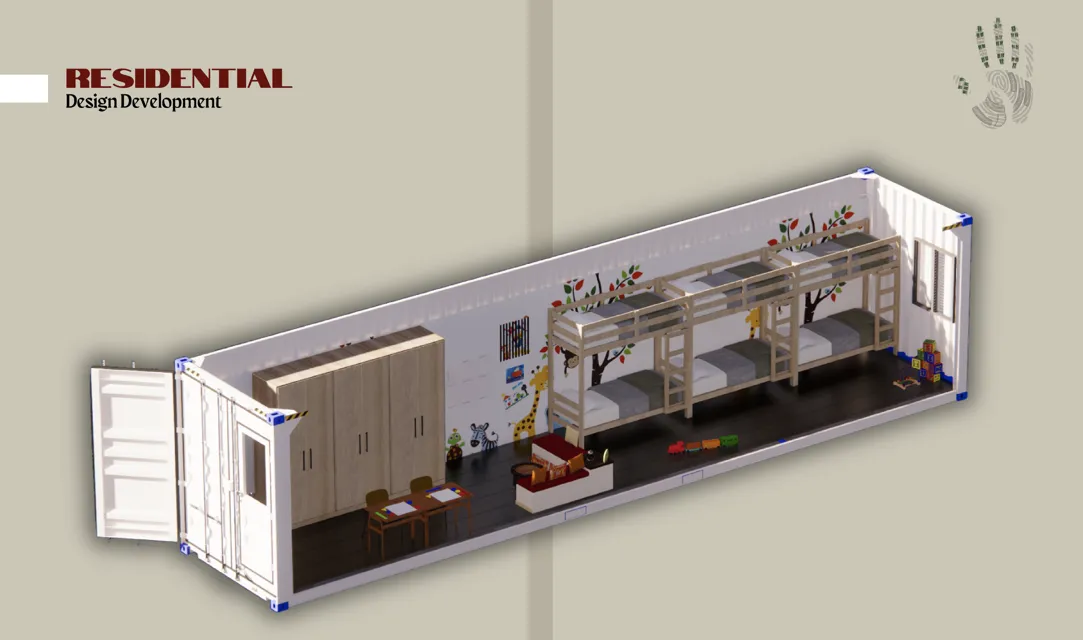
Habiba says studying Interior Design at Heriot-Watt School of Textiles and Design has taught her a huge amount.
“I’ve really enjoyed it and it just changed my whole perspective on the industry,” she says.
“Everyone thinks interior design is just the finishing touches, the materials and the colours. But it's way more than that. I've learned a lot of problem-solving skills – and it’s really challenged me.”
Habiba’s tutor was Alison Hamilton-Pryde, Undergraduate Director of Studies in Interior Architecture & Design and a lecturer in Constructed & Virtual Environments at Heriot-Watt School of Textiles and Design.
She said: “Habiba’s Design for Disaster project epitomises everything we strive to achieve as a University, in forming graduates who are focused on tackling global challenges, improving the lives of others and bringing positive outcomes for our world. It has been a joy to see Habiba develop such a carefully thought through proposal and we wish her all the best in whatever she does next.”